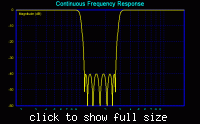arsalanarm
Junior Member level 3
Hi all
i need a band stop filter With the following specifications:
Center frequency :2 MHz
Pass Band Width : 1MHz
High attenuation coefficient
" i need to Completely Remove 1MHz To 3MHz Frequency"
please help to Design this Filter or Put The Related Schematic or Datasheet
Thank you Very much
i need a band stop filter With the following specifications:
Center frequency :2 MHz
Pass Band Width : 1MHz
High attenuation coefficient
" i need to Completely Remove 1MHz To 3MHz Frequency"
please help to Design this Filter or Put The Related Schematic or Datasheet
Thank you Very much
